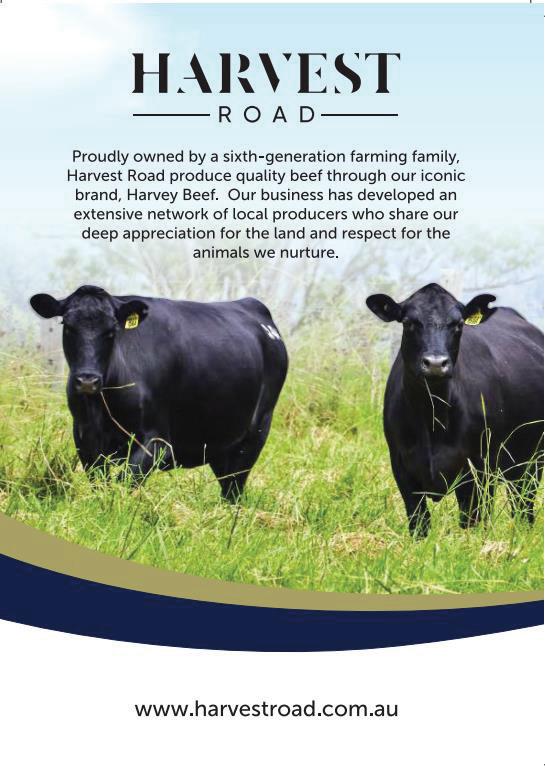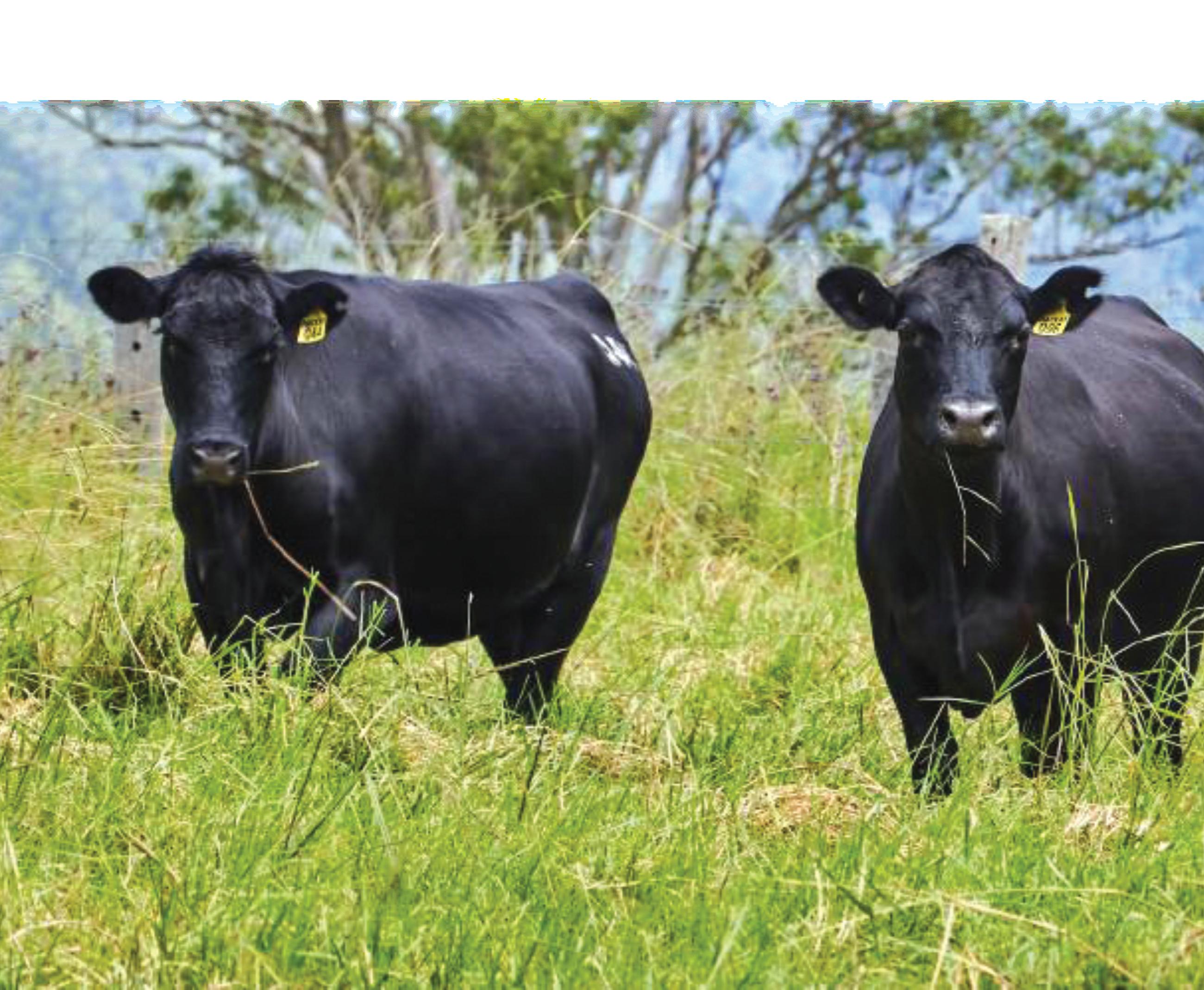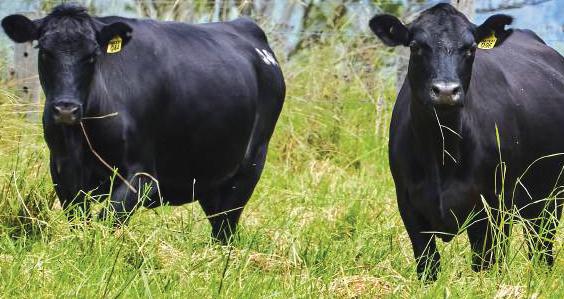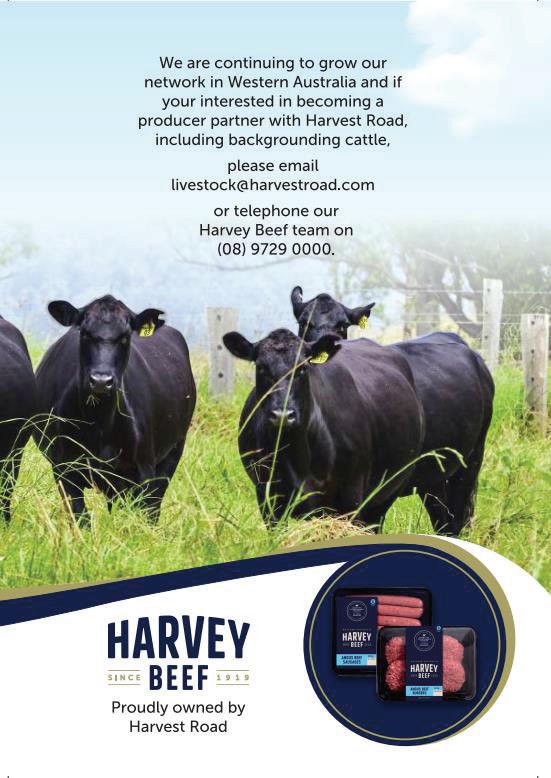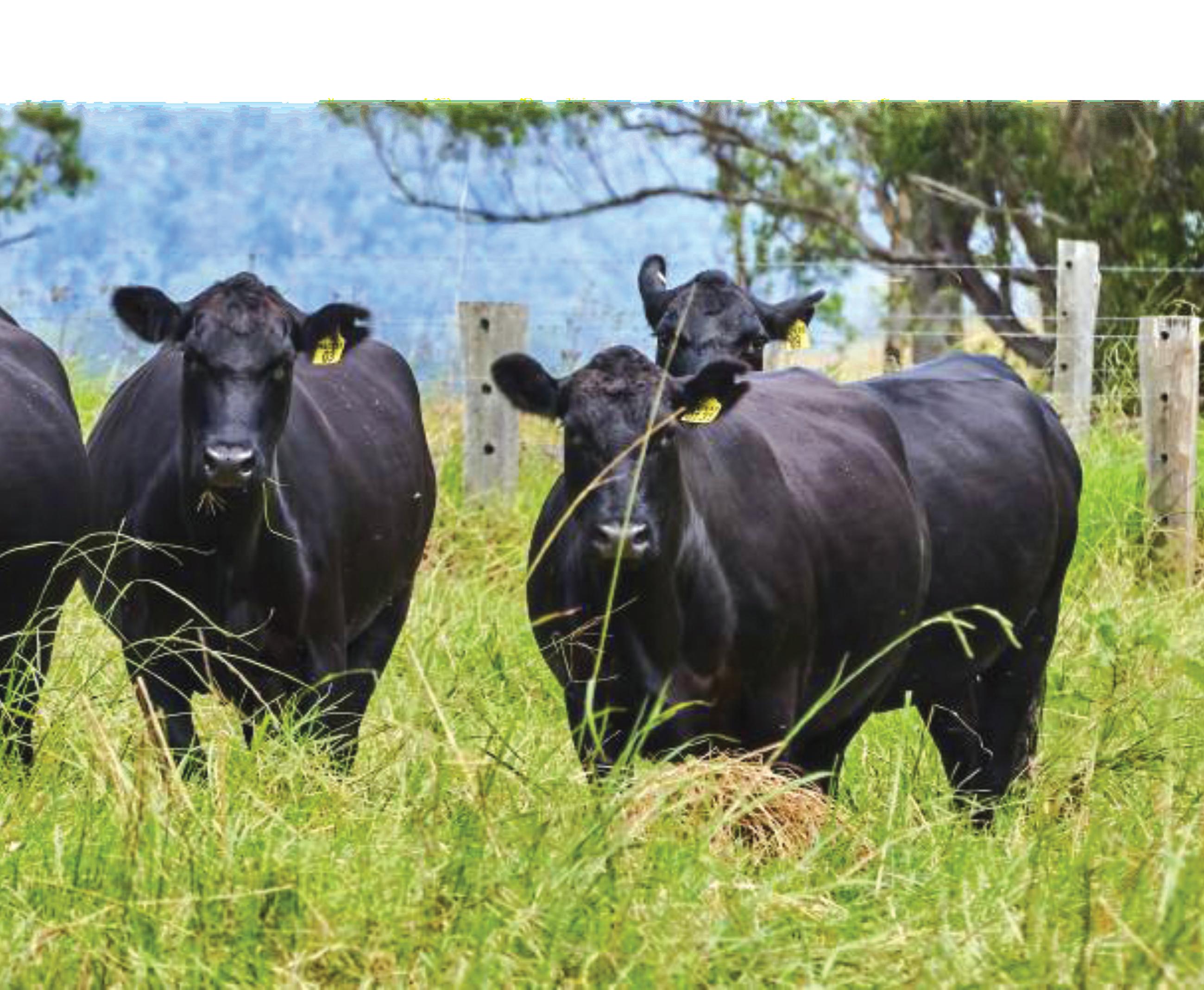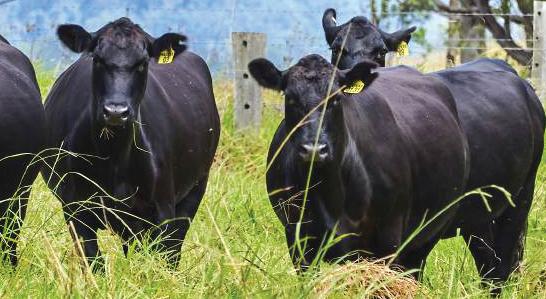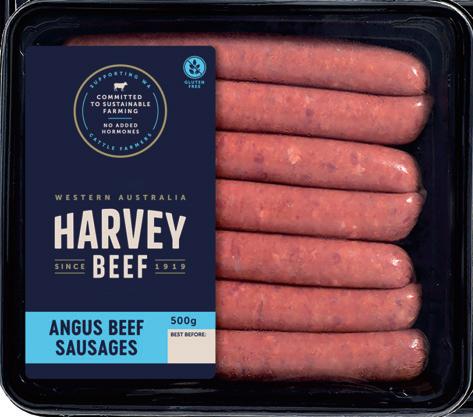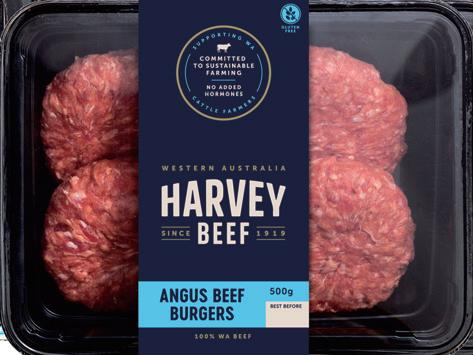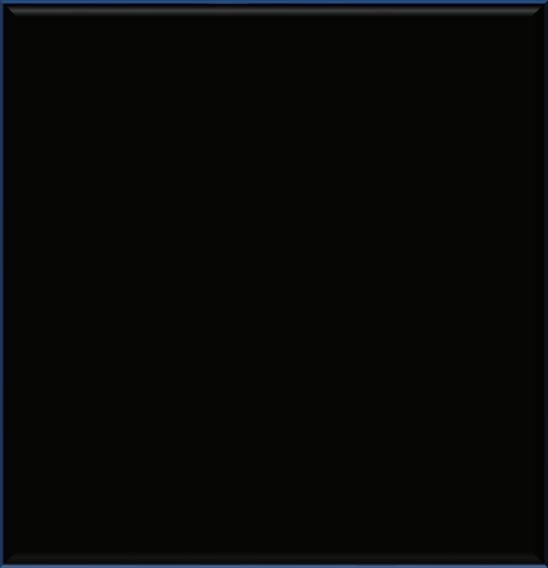
14 minute read
Jordan Sprigg Sculptures Page 7-11Going Black in the Southern Rangelands
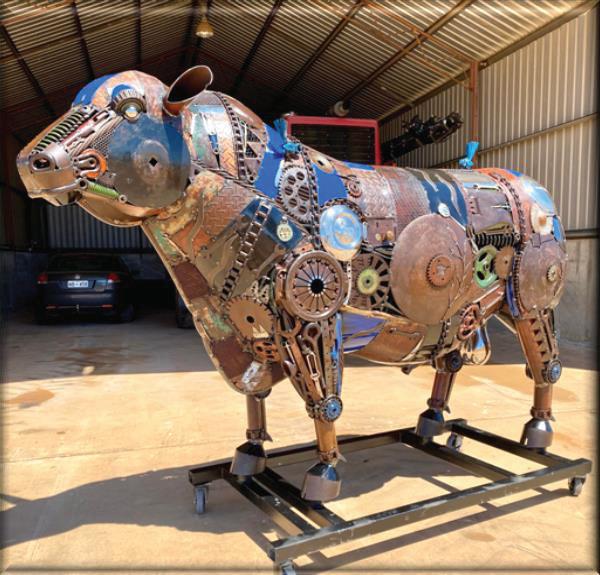
Jordan Sprigg is an artist like no other, Based in country WA, he used retired tools, recycled metal and machinery parts to create sculptures ranging from small dragonflies to large pieces such as the Angus Bull pictured left.
Advertisement
Jordan completed the 600kg Angus Bull in 2021 from all sorts of retired tools and scrap metal, including the 15kgstainlesssteelcrownjewelsfabricatedby Black Star Fabrication. The sculpture took around 350 hours to complete and has found a new home at Sheron Farm in Harvey.
“I am an artist based in country Western Australia in a small wheatbelt town called Narembeen. I enjoy using recycled metals that are found from retired machinery and scrap heaps where I try to use pieces that capture the character of the sculpture I'm trying to create. My inspiration generally comes from the wide scoping animal kingdom. My scrap iron sculptures are kept in their raw rusted state to highlight the ageing of metal and the history of each piece used. I appreciate the rich dark brown textures that only rusted metal can create and find enjoyment in giving these timeworn parts another life. I will take commissions of all shapes and sizes and will give just about any animal a try. ” Jordan Sprigg
Please look Jordan up, you won’t be sorry! You will be amazed at the sculptures he has created. There is movement and definition to each and every one.
http://www.jordanspriggsculptures.com.au/ Jordan Sprigg Sculptures | Facebook
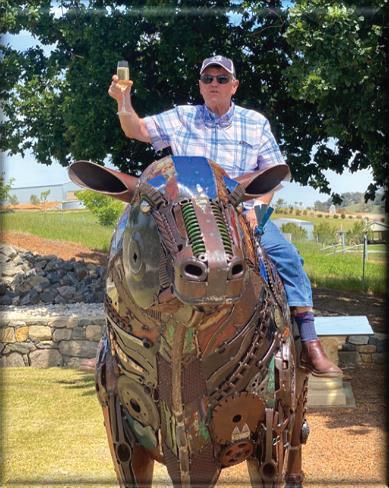
Proud owner - Jim Moore, Sheron Farm, Harvey Construction of the Angus Bull Close up detail
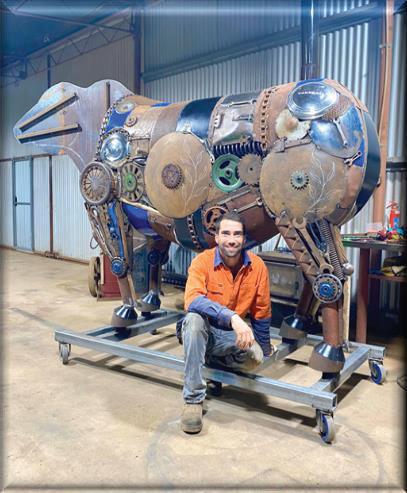
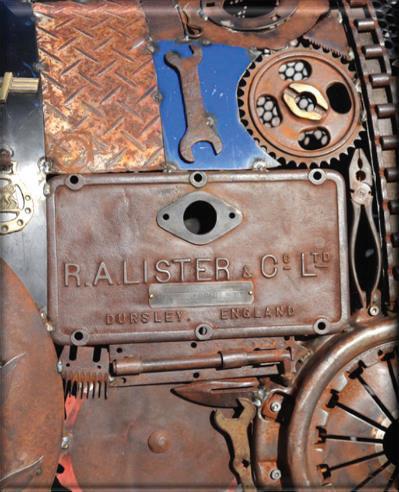

GOING BLACK IN THE SOUTHERN RANGELANDS Changing Markets Changing Breeds

Alan Peggs, Alan Peggs Rural Pty Ltd, Agricultural & Pastoral Consultants, Nedlands, WA 15 June 2022
1. AIMS
a. Compare the performance of Droughtmaster, Angus x Droughtmaster and Angus weaner steers grown out on grass in the Southern Rangelands (SR). b. Demonstrate the potential for high quality grass-fed beef production in the SR for domestic and export markets. c. Increase the long term profitability and sustainability of beef cattle production in the SR
1.RATIONALE
There appears to be a ‘paradigm’ shift in the market for cattle from the SR. Since the early 1990’s the principal market for cattle from the region has been live export. This market has had a preference for Bos indicus – Brahman – and Bos indicus infused – Droughtmaster (62.5% Brahman and 37.5% Shorthorn) and Santa Gertrudis (37.5% Brahman and 62.5% Shorthorn) – cattle. As a consequence most herds in the SR are based on these breeds and in particular the Droughtmaster. There has been a substantial decrease in Australian live cattle exports since 2019. In 2021 numbers are forecast by Meat and Livestock Australia (MLA) to be 46% lower than those in 2019. While in Western Australia exports are projected to fall by 51%.
Table 1: Australian and Western Australian Live Cattle Exports 2016 to 2021 Year 2016 2017 2018 2019 2020 2021
‘000 hd ‘000 hd ‘000 hd ‘000 hd ‘000 hd ‘000 hd
Australia
1142 807 1088 1303 1056 705
Western Australia
355 244 260 301 256 148
WA Share
31% 30% 24% 23% 24% 21%
Source: Anon., (2021), Industry projections 2021 Australian cattle-November update, Meat and Livestock Australia, Sydney, November, p.6.and Greg Norman, personal communication, Meat and Wool Value Chain, Primary Industries and Development, Department of Primary Industries and Regional Development, South Perth, 11 November, 2021. This begs the question – what is the future for live exports? This is an important question for pastoralists in the SR because most, as alluded to above, target this market. Is this decline simply a temporary phenomenon or does it represent a paradigm shift in the market? One of the major reasons for the decline in live exports over the last two years has been due to live export prices being lower than domestic prices.
Table 2: Annual Cattle Prices – Light Live Export Steer Darwin v Restocker, Vealer and Feeder Steers Muchea Year Darwin WA Saleyards WA Saleyards WA Saleyards
Class Light Steer Restocker Steer Vealer Steer Feeder Steer Unit c/kg lw c/kg lw c/kg lw c/kg lw 2016 343 339 350 324 2017 340 334 342 301 2018 300 250 305 277 2019 307 279 297 273 2020 345 401 389 342 2021 355 447 526 491
Source: Meat and Livestock Australia, (2021), Australia Live export cattle prices Calendar year and Australia Saleyard cattle indicators – WA Calendar year, Market Information, Meat Livestock Australia, Sydney. Light Steer = 250 to 300 kg lw; Restocker Steer = 200 to 280 kg lw; Vealer Steer = 280 kg lw to 330 kg lw; Feeder Steer = 330 to 400 kg lw.
Unfortunately no data is available from Meat and Livestock Australia for live export prices out of Western Australia since 2017. Hence prices out of Darwin are used as a proxy. Data for 2015, 2016 and 2017 for Indonesian light steers out of Broome and Darwin indicate they were very similar. The Western Australia prices are based on an amalgam of those prevailing at Muchea, Mount Barker and Boyanup. A perusal of the table above shows that until 2020 live export prices were more than competitive with local saleyard prices in Western Australia. In 2020 and continuing into 2021 there was substantial divergence between live export and saleyard prices. Given the distance between most locations in the SR and Muchea is shorter than their distance from Broome –Gascoyne Junction is 1010 km from Muchea but 1615 km from Broome – there is a freight advantage in marketing cattle in the south rather than in the north.
In 2020 both restocker and vealer steers on average were 16% and 13% higher than light steer prices while feeder steers were similarly priced. By 2021 prices were substantially higher in the south with restocker steers 26% above the light steer price, vealer steers 48% and feeder steers 38%. Prices in 2021 reflect favourable seasonal conditions in the agricultural region of Western Australia, similarly favourable conditions in much of the Eastern States which encouraged continued demand for Western Australian cattle and high beef prices, which when coupled with modest grain prices in 2020, boosted demand for feeder cattle from local lot feeders. In essence in 2021 the live export trade found it difficult to compete with local demand. Currently (June 2022) there is an hiatus in live exports to the state’s largest exporter Indonesia due to an outbreak of foot and mouth disease (FMD). Over the last three years the impact of COVID-19 on disposable income in Indonesia and competition from Indian buffalo and Brazilian beef imports has made it increasingly difficult for Indonesian lot feeders to compete in the domestic market. It is unlikely this situation will change in the foreseeable future unless the price of Australian feeder steers falls substantially or there is a very favourable moment in the exchange rate between the Indonesia rupiah and the Australia dollar. Similarly in the state’s second largest market, Vietnam, COVID-19 has had a negative impact on demand. In addition high cattle prices have discouraged live exports to Israel, traditionally WA’s third largest market. The upshot of high Australian cattle prices and subdued demand in live export markets has resulted in the state’s export of live cattle falling by more than half over the last two years. The big question is this change permanent? Simon Quilty, an international ‘protein’ market analyst, suggests in the post COVID-19 era there will be a ‘two speed’ recovery in the world market for beef. In the ‘fast lane’ will be the United States and Australia with high export prices because they have access to high value markets – China, Japan and Korea - and in the ‘slow lane’ will be India and Brazil with low export prices because they do not. This lack of access is due to phyto-sanitary issues – lack of freedom from FMD in the case of India and some concern in these markets about the veracity of Brazil’s regional freedom from FMD. In addition almost all the beef exported by the United States to these markets is ‘high quality’ grain-fed as is a substantial proportion of Australian beef whereas most of the beef exported by Brazil and all India’s is ‘low quality’ grass-fed beef. It is this ‘flight to quality’ which Simon Quilty believes as the future of the Australian beef industry. A number of prescient pastoralists in the SR, recognizing there is a change in market dynamics, have introduced Bos taurus Charolais, Poll Shorthorn, Red Angus, Angus and Murray Grey - breeds into their Brahman, Droughtmaster or Santa Gertrudis herds in order to target the local market’s preference for Bos taurus rather than Brahman or Bos indicus infused breeds.
In the 2022 bull marketing season almost half of all the bulls sold by public auction in WA were Angus. Bos indicus and Bos indicus infused breeds comprised 27% of those purchased with the largest being Droughtmaster at 12.6% followed by Santa Gertrudis at 4.4% and Brahman at 3.5%.
Boolathaha Station Carnarvon Angus Calves on Droughtmaster Cows Jul 21

There is little doubt the Angus is the preferred breed in the agricultural region. In the pastoral regions of the state only a handful of stations use Angus bulls over their females. Yet if the market dynamics are changing away from live export to the domestic market for beef and Angus are the preferred breed in this market then there is a compelling case for pastoralists in the SR to consider the introduction of Angus bulls into their Droughtmaster, Santa Gertrudis and Brahman herds. The main reason pastoralists in the SR have been reluctant to introduce Angus bulls is because they are black coated. With this coat colour they believe they cannot achieve the same productivity parameters as red coated animals. There is little scientific evidence to support this view.
Table 3: Western Australia Bulls Sales 2022
Breed
Angus Droughtmaster Murray Grey Simmental* Charolais Santa Gertrudis # Brahman Red Angus Other TOTAL Number Sold
Head 1110 289 188 182 129 101 80 52 154 2285
Proportion of Total Sold
% 48.6 12.6 8.2 8.0 5.6 4.4 3.5 2.2 6.7 100.0
Average Price
$/hd 11124 8667 9169 19673 7624 6348 5963 7185 7107 9757
‘* Includes Simangus and Black Simmental # Includes Sangus Source: Jodie Rintoul, (2022), ‘2021-2022 Bull Sale Wrap Up’, Farm Weekly, Western Australian Primary Industry Press, South Perth, 28 April, pp.51-61. A trial in Alice Springs, which has a climate similar to much of the SR, indicates black coated animals can perform as well if not better than red or grey coated.
Table 4: Quality Graze Steer Challenge, Old Man Plains Research Station, Alice Springs. Breed Number Average Gain
Black Coated kg/day Angus x Brahman 8 0.590 Angus 5 0.580 Average 13 0.585
Red/Grey Coated Santa Gertrudis Droughtmaster Hereford Murray Grey Shorthorn Brahman Average
8 19 7 7 5 5 51 0.570 0.550 0.550 0.540 0.530 0.530 0.548
Trial Average 64 0.560 Source: Adapted from Chris Materne, John Tincknell and Peter Conradie, (2017), Quality Graze Producer Steer Challenge, Final Report Project E.PDS.1414, Meat and Livestock Australia, North Sydney, January, p.24 and p.32.
Boolathaha Station Carnarvon Angus x Droughtmaster calves Jul 21

The ‘Quality Graze Producer Steer Challenge’ was conducted on ‘Old Man Plains’ research station at Alice Springs. Stations in the region were invited to enter a sample of their steers into the ‘Challenge’. The steers submitted reflected the range of breeds run by pastoralists in Central Australia. They entered as weaners and were grazed on buffel grass based pastures until they were ‘finished’ as grass-fed ‘trade steers’. This took two seasons. When they were finished they were transported to Naracoorte in south eastern South Australia – a distance of 1900 km – where they were slaughtered and the carcass attributes of the various breeds were assessed according to Meat Standards of Australia (MSA) criteria. The primary aim of the ‘Challenge’ was to demonstrate it is possible to produce ‘high quality’ (MSA graded) beef from a pastoral environment with a range of breeds.
1. PROPOSAL
Compare the performance of Droughtmaster, Angus x Droughtmaster and Angus weaner steers grown out on buffel grass pastures on Boolathana Station, Carnarvon. Adam Hamersley, owns both Boolathana and Wandagee stations. Boolathana is c.35 km north of Carnarvon while Wandagee is c.150 km. On Wandagee he runs a Droughtmaster herd where all females are mated to Droughtmaster bulls. On Boolathana he operates a Droughtmaster herd which is ‘terminally’ mated to Angus bulls. Replacement females are sourced from Wandagee. Adam is prepared to ‘host’ a steer trial on Boolathana and provide Angus x Droughmaster and Droughtmaster weaner steers for the trial. Todd Quartermaine, Ucarty Feedlot, Dowerin, is prepared to provide the Angus weaner steers. Adam is prepared to provide ‘free’ agistment for the Angus steers On this basis the trial will be able to compare the performance of the three breed types in a SR environment.
1. TRIAL PROTOCOL
Late June/early July 2022 - 40 Angus weaner steers arrive; provide two weeks to ‘adjust’ before recording steer trial start-point entry live weight. 40 Angus x Droughtmaster and - 40 Droughtmaster steers weighed for steer trial start-point entry live weight - all steers placed in Walkadgi paddock on same day. Late August/early September 2022 – trial mid-point weighing; record live weight gain, any mortalities. Late October/early November 2022 – trial end-point weighing, record live weight gain, any mortalities. In essence the trial will access the live weight gain of Angus, Angus x Droughtmaster and Droughtmaster weaner steers with the aim of demonstrating black coated animals can perform similarly to red coated in a pastoral environment. Late October/early November 2022 – all trial steers to go down to Ucarty Feedlot, Dowerin - Angus steers grain-fed for 150 days - Angus x Droughtmaster and - Droughtmaster steers grain-fed for 100 days. - assess feedlot entry weight, feedlot exit weight, determine daily gain, feed conversion efficiency, mortality rate. Late January/early February 2023 – Angus x Droughtmaster and Droughtmaster 100 day grain-fed steers to abattoir (V&V Walsh or Western Meat Packer Group) – access carcass attributes, MSA scores by breed type. Late March/early April 2023 – Angus 150 day grain-fed steers to abattoir (V&V Walsh) – assess carcass attributes, MSA score.
Late July 2022 – Boolathana – Going ‘Black’ in the Southern Rangelands – Rationale for Steer Trial
- rationale for the trial - Adam Hamersley, Boolathana: Angus Program - other Angus breeders in the SR for example: - David McQuie, Bulga Downs, via Leonora or - David Geraghty, via Wiluna or - Justin Steadman, Wooramel, via Carnarvon - Chris Materne, Old Man Plains research station, Alice Springs: High Quality Beef from the Rangelands - Christian Duff, Angus Australia, Armidale, NSW: Angus in Northern Australia
Late August/early September – Alice Springs – SR Pastoralists Study Tour Angus in Central Australia
- Aims: - 1. demonstrate Angus perform in an environment comparable to the SR - 2. demonstrate it is feasible to produce high quality beef in a rangeland environment - Chris Materne, Old Man Plains Research Station: High Quality Beef from the Rangelands - New Crown Station – Angus - Tieyon Station – Angus - Palmer Valley Station - Angus - Umbrearra Station – Red Angus
October 2022 – Boolathana – Going ‘Black’ in the Southern Rangelands – Interim Results Steer Trial
- interim trial results: live weight gain, mortality rate x breed type - Adam Hamersley, Boolathana - Todd Quartermaine, Ucarty Feedlot, Dowerin: A Lot Feeder’s Perspective – Angus, Angus x Droughtmaster and Droughtmaster - Anthony Morabito, Western Meat Packer Group, Osborne Park: Demand for Angus Beef - Alan Peggs, Nedlands, - Economics of Angus, Angus x Droughtmaster and Droughtmaster Feeder Steer Production in the SR
April 2023 – Boolathana - Going ‘Black’ in the Southern Rangelands – Final Results Steer Trial
- final trial results: - Adam Hamersley, Boolathana: live weight gain, mortality rate x breed type - Todd Quatermaine, Ucarty Feedlot, Dowerin: live weight gain, mortality rate x breed type Anthony Morabito, Western Meat Packer Group: carcass attributes, MSA scores, value x breed type - Alan Peggs, Nedlands: Summary of the Trial and the Role for Angus in the SR - Alan Peggs, Nedlands: Future Research – Angus, Angus x Droughtmaster, Droughtmaster Females – Performance in the SR
Alan Peggs, Alan Peggs Rural Pty Ltd, Agricultural & Pastoral Consultants, Nedlands, WA
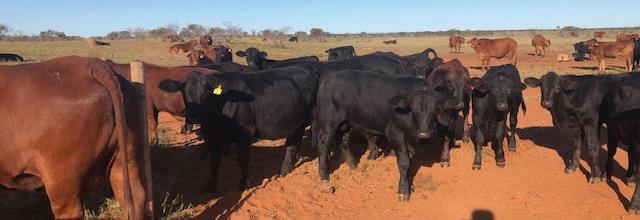
Boolathaha Station Carnarvon Angus Calves x Droughtmaster Cows 2 Jun 22
